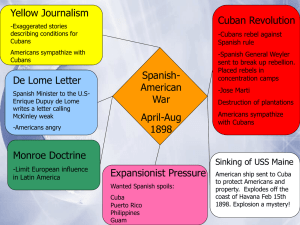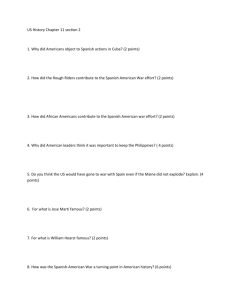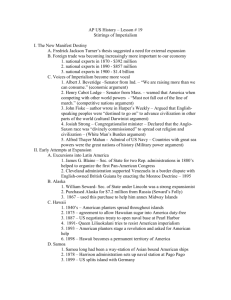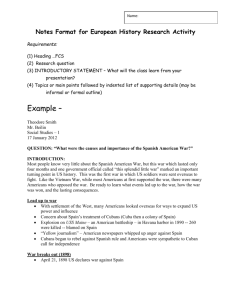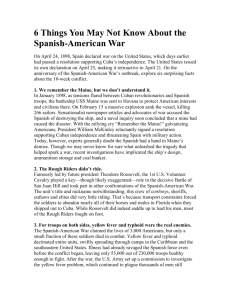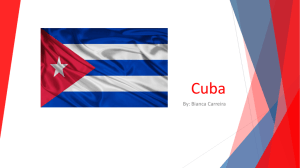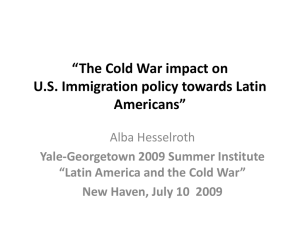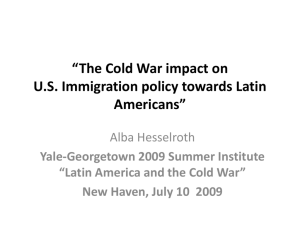The Spanish-American War 1898
advertisement
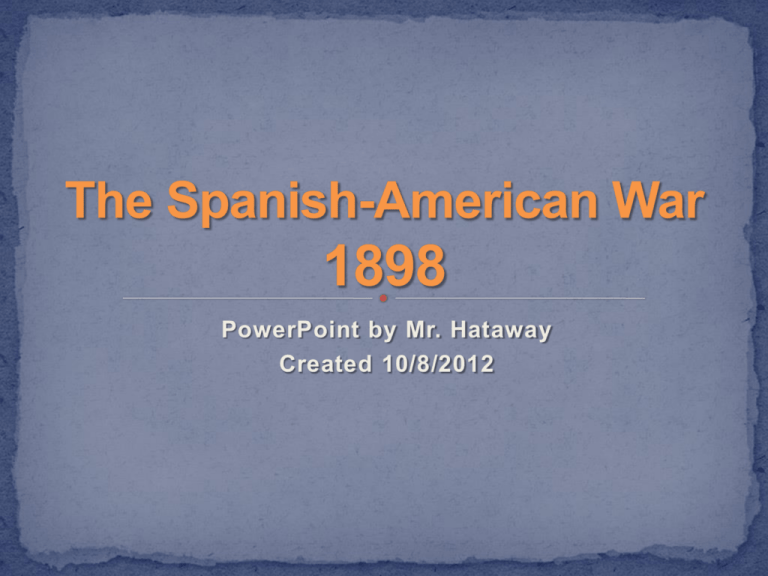
PowerPoint by Mr. Hataway Created 10/8/2012 Define the term “sensationalism?” How can sensationalism trigger public reaction? A war? What country had sovereignty over Cuba in the nineteenth century? CORNELL NOTES: THREE QUESTIONS Today, I will learn . . . Students will examine the causes, events, and outcomes of the Spanish-American War. I will learn it by . . . Student will actively listen and write notes using Cornell Strategies. I have learned it when I can . . . Students will construct a graphic organizer that summarizes the causes, events, and outcomes of the Spanish-American War. Why is the Spanish-American War considered a turning point in American history? Between 1868 and 1898, a series of revolted by Cubans against Spanish rule. Latest uprising began by Cuban exile, José martí New Spanish Governor, General Weyler established concentration camps 200,000 Cubans died of starvation or disease nickname El Carnicero (“The Butcher”). Rival newspapers exaggerated brutality of Spanish treatment of Cubans. New York Journal – by William Randolph Hearst New York World – by Joseph Pulitzer Sensationalized stories became known as yellow journalism. Joseph PULITZER William Randolph HEARST Spanish Ambassador wrote letter describe Pres. McKinley as weak. Cuban agents intercepted letter; delivered New York Journal. Pres. McKinley sent battleship to Havana harbor “to protect American lives and property.” ALL THAT WAS NEEDED TO START A WAR WAS A SPARK AND THIS CAME ON FEBRUARY 15TH, 1898, IN HAVANA HARBOR. USS MAINE IN HAVANA, CUBA HARBOR 12 13 Ship exploded February 15, 1898. Killed 260 officers and crew. Cause unknown; newspapers blamed Spain. Yellow journalists were quick to blame the Spanish WHAT DOES THIS CARTOON SUGGEST IS THE SITUATION FOR THE CUBANS? America’s Interest in Cuba Cuban sugar exported to U.S. American’s owned $50 million in Cuban property. The Philippines Spanish colony for 300 years; numerous rebellions May 1, 1898, U.S. Commodore George Dewey defeats the Spanish fleet at Manila Bay in the Philippines. US DESTROYS THE SPANISH FLEET AT MANILA BAY 20 21 22 Voluntary cavalry unit comprised of former cowboys, miners, law officer, Ivy League athletes, and American Indians. Created and led by Theodore Roosevelt, former Secretary of the Navy. THEODORE ROOSEVELT AND THE “ROUGH RIDERS” IN CUBA July 1, after seizing Kettle Hill outside Santiago, assists the army in capturing San Juan Hill. BATTLE SCENE WITH TEDDY ROOSEVELT ON THE HORSE 26 In the Treaty of Paris, Spain agree to: Cede Guam and Puerto Rico to the U.S. Sell the Philippines to the U.S. for $20 million Cubans gained independence from Spain However, forced to adopt the Platt Amendment, which gave the U.S. the right to intervene to protect Cuba’s independence. Spanish rule ends in the Western Hemisphere.
